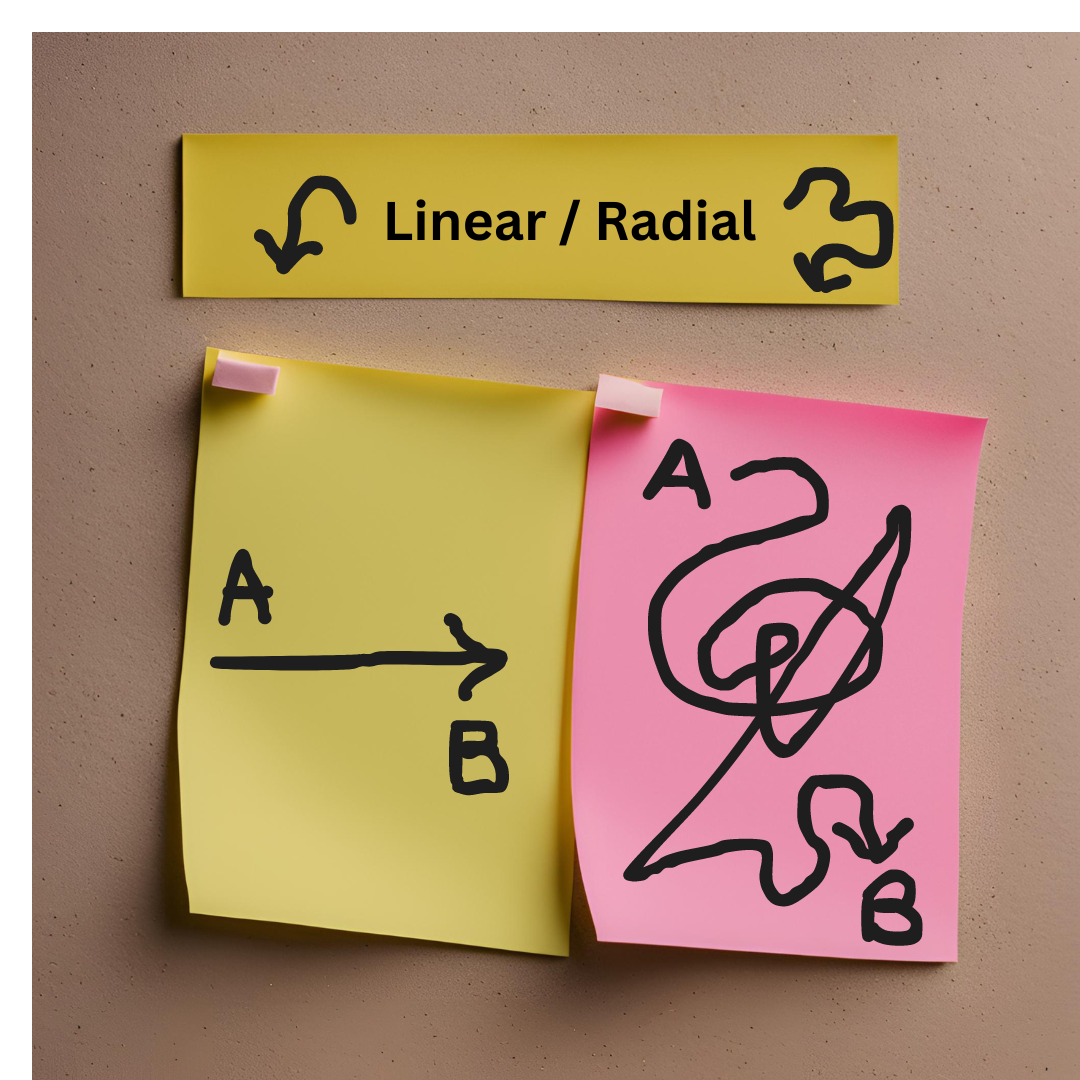Linear? Or Radial?
Linear and radial thinkers take different routes on the way to their answers.
Are you a linear or radial thinker?
My colleagues and I throw these terms around often to describe the authors we're working with. As a ghostwriter, I gather material from my authors through a series of interviews. Every question fits within a chapter outline I've drawn up ahead of time, with each prompt finely tuned to help guide the author in answering the readers' burning questions.
A LINEAR-thinking author is straightforward in answering those questions. "Why is it so important for business leaders to niche down? Well, because that's how they'll ultimately increase their market share." It's easy to follow a linear-thinker and organize their material. A ghostwriting project with a linear thinker tends to move efficiently, although they may sometimes need to be prompted for deeper elaboration.
A RADIAL-thinker is much less direct in their responses. That's because their thinking functions more like a spiral working its way toward a bulls-eye, and less like a straight line. They often start with a story, or the question will spark a thought about a topic we were discussing earlier. "Why is it so important for business leaders to niche down? Oh wow, I remember how hard it was for me to do that! In fact, before I settled on my current business model, I tried about six different other things. Let me tell you about them..." They might work their way toward a direct answer, processing different alternatives. These types of thinkers are harder to follow and their material tends to be a much bigger challenge to organize. However, radial thinkers are no less brilliant; their gems of wisdom simply take more effort to mine.
To optimize my work with radial-thinking authors, I use a document that has clear headers and sub-headers in the side navigation bar. I get that organization internalized before the call. Then, during the call, if the author jumps around, I can jump around with them. If they share a nugget about mindset, I jump to the mindset header and write notes there; if they start sharing a story that would work as a great chapter hook, I jump up to the intro header. We wind our way together, sorting their brilliance into nicely packaged buckets and categories that will ultimately serve their reader as a well-delivered argument. These authors tend to pose a bigger challenge and their projects usually take longer, but their creativity and story telling can be a huge reward.
What kind of thinker are you?

